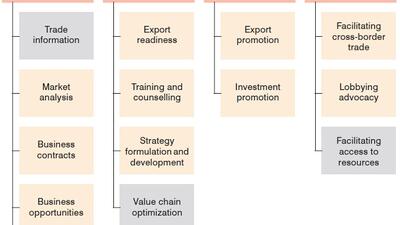


Overcoming East Africa’s infrastructure challenges
The importance of infrastructure with regard to regional integration remains doubtless in Africa. Past efforts at regional integration have focused on removing barriers to free trade, increasing the free movement of people, labour, goods and capital across national borders.
The past decade has included an unprecedented level of investment into infrastructure development across Africa, including in energy, rail, roads, ports and telecommunications. The overall value of mega-projects under construction across Africa in 2014 stood at US$326 billion according to the Annual Deloitte African Construction Trends Report 2014, a 66% increase from 2013.
The Southern Africa region contributed the biggest share of the projects (46%) followed by West Africa, East Africa, Central Africa and North Africa. The building boom has come in response to the realization that infrastructure is the main driver of intra-regional trade and integration.
Africa largely consumes goods that are produced elsewhere, mostly as a result of inadequate infrastructure preventing intra-regional trade and the creation of regional markets. For instance, in 2012 it cost approximately US$2,000 to ship a 20-foot container by sea from China to Mombasa, Kenya, a distance of almost 9,500 kilometres. However, transporting that same container from Mombasa to Kigali, Rwanda – only 1,700 km over land – cost around US$4,650. That is especially sad since both countries are members of the same economic bloc, the East African Community (EAC).
In East Africa, the burden of poor or inadequate infrastructure is a major constraint to regional integration and development. In fact, the cost of transport has been estimated to add as much as 50% of the total cost of goods sold in the region.
However, since the rebirth of regional integration in East Africa began in 1999 there has been increasing strategic interest from governments to improve infrastructure. This has been identified as a key driver of trade and a catalyst for socio-economic development, which are the main pillars supporting regional integration.
The EAC has adopted a coordinated infrastructure projects approach since 2012 which has led to issues concerning supply and proper management of infrastructure now being embedded in bloc policies, which in itself enhances regional integration. There is now emphasis on regional economic corridors with mega infrastructure projects at different levels of planning and implementation.
For instance, the two main regional seaports of Dar es Salaam, Tanzania (linking it to Uganda, Rwanda, Burundi, and Democratic Republic of Congo), and Mombasa (linking Kenya to Uganda, Rwanda, Burundi Democratic Republic of Congo and Republic of South Sudan) are undergoing extensive infrastructure and capacity expansion.
These initiatives focus on all modes of transport including communication and energy. In particular, mobile telephony has taken the lead in integration with four major mobile networks operating as one network across the region without roaming charges. Planned heavy investment in soft infrastructure will enable interfacing of regional customs systems, the development of an electronic single window and deployment of electronic cargo tracking. Moreover, the investment in technology has supported robust mobile-money transfer and electronic banking services that have significantly boosted intra-regional trade.
While the business community continues to experience some infrastructurerelated challenges, the future looks bright. The combined initiatives already in place, supported by strong public and private sector partnerships, are expected to merge with future projects to provide a much more efficient and much less obstructive infrastructure systems. This, in turn, will facilitate the movement of goods and enable the establishment of intra-regional trade markets, a scenario from which everyone involved is likely to benefit. Inclusive policy initiatives that lead to such improvements can only assist in the development of local economies.









